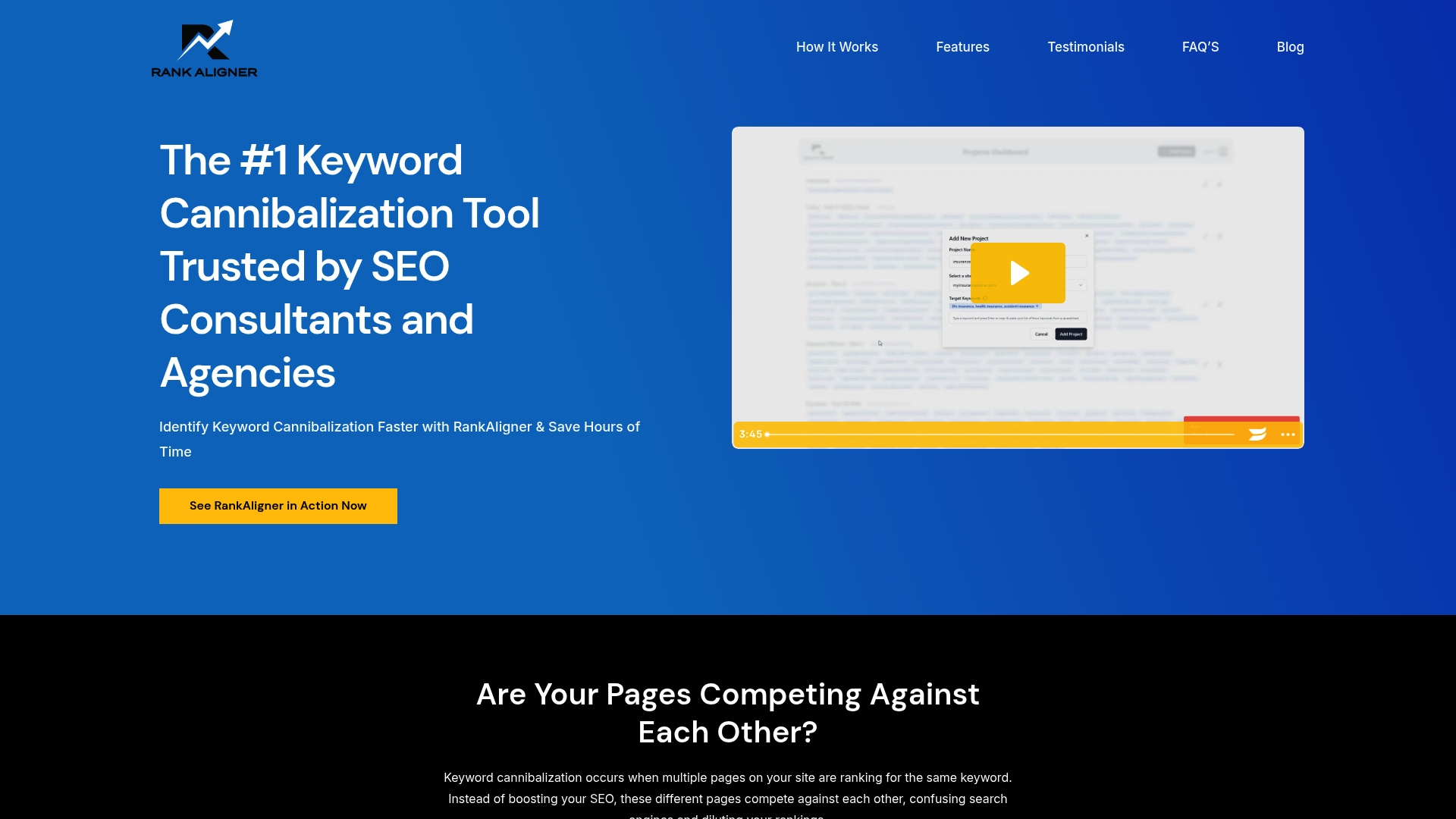Technical SEO might sound like behind the scenes work, but it shapes everything about how websites show up on Google. Over 50 percent of all website traffic actually comes from organic search, so a site’s technical setup can make or break visibility. Most people think stuffing pages with keywords is enough, but what really sky rockets a site’s ranking is lightning fast load speed and a rock solid structure that search engines love to crawl.
Table of Contents
- Defining Technical Seo: Key Components Explained
- Why Technical Seo Matters: Impact On Visibility And Traffic
- How Technical Seo Works: Underlying Principles And Algorithms
- Core Concepts Of Technical Seo: Structure, Speed, And Accessibility
Quick Summary
| Takeaway | Explanation |
|---|---|
| Optimize website structure for SEO | A clear website architecture helps search engines effectively crawl and index your content, enhancing visibility. |
| Improve page loading speed | Faster loading times reduce bounce rates and improve user experience, which significantly affects search rankings. |
| Ensure mobile responsiveness | Websites must be user-friendly on mobile devices to meet Google’s mobile-friendliness criteria for better visibility. |
| Implement XML sitemaps | Providing sitemaps helps search engines understand the structure of your site and prioritize important pages for indexing. |
| Focus on secure website protocols | Using HTTPS establishes a secure connection, which is essential for building trust with users and improving search engine rankings. |
Defining Technical SEO: Key Components Explained
Technical SEO represents the critical foundation that enables search engines to effectively crawl, understand, and index a website’s content. Unlike content or off-page SEO strategies that focus on keywords and external links, technical SEO concentrates on improving website infrastructure and performance to enhance search engine visibility.
To help clarify the differences and focus areas within SEO, the following table compares Technical SEO to Content SEO and Off-Page SEO, summarizing each approach and its primary impact.
| SEO Type | Focus Area | Key Actions | Main Impact |
|---|---|---|---|
| Technical SEO | Website infrastructure and performance | Site architecture, page speed, mobile optimization | Crawlability, indexability |
| Content SEO | Content quality and relevance | Keyword research, content creation, on-page SEO | Content relevance, ranking |
| Off-Page SEO | External signals | Link building, social sharing, outreach | Page authority, backlinks |
Core Infrastructure Elements
At its fundamental level, technical SEO involves optimizing a website’s backend structure to help search engine crawlers navigate and comprehend digital content seamlessly. These core infrastructure elements include:
- Website architecture and navigation design
- Page loading speed optimization
- Mobile responsiveness and compatibility
- Secure and clean website code
- Proper implementation of metadata and schema markup
Search engines like Google prioritize websites with robust technical foundations. Michigan Technological University highlights that technical SEO aspects such as page speed, caching, sitemaps, critical CSS, HTTPS security, and mobile-friendliness can significantly impact search engine rankings and user experience.
Performance and Accessibility Optimization
Technical SEO goes beyond simple infrastructure improvements. It encompasses creating a comprehensive digital environment that allows search engines to understand and rank web pages effectively. This involves intricate processes like:
- Ensuring clear site structure and logical URL hierarchies
- Implementing comprehensive XML sitemaps
- Managing robots.txt files for precise crawler instructions
- Resolving potential crawl errors and broken links
- Establishing canonical tags to prevent duplicate content issues
Website owners can read more about understanding technical SEO fundamentals to develop a more strategic approach to search engine optimization. By focusing on these technical aspects, businesses can create a solid digital foundation that supports better search visibility and user engagement.
The following table organizes the core infrastructure and performance elements that make up technical SEO, providing a quick reference to essential characteristics and their optimization focus.
| Element | Description | Optimization Focus |
|---|---|---|
| Website architecture | Structure and organization of website pages | Effective crawl and navigation |
| Page loading speed | Time it takes for a page to fully load | Performance and user experience |
| Mobile responsiveness | Adaptability to different devices and screen sizes | Mobile usability |
| Secure website code (HTTPS) | Implementation of secure protocols and clean code | Security and trust |
| Metadata & schema markup | Structured information for search engines | Indexing and rich results |
Why Technical SEO Matters: Impact on Visibility and Traffic
Technical SEO is not merely a background process but a critical strategy that directly influences a website’s search engine performance and user engagement. By creating an optimized digital infrastructure, businesses can significantly enhance their online visibility and attract more organic traffic.
Search Engine Crawlability and Indexing
Search engines rely on sophisticated algorithms to discover, understand, and rank web content.
Technical SEO ensures that these algorithms can efficiently crawl and index a website. When a site’s technical elements are well-structured, search engines can:
- Quickly navigate through website pages
- Understand content hierarchy and relevance
- Identify and prioritize high-quality pages
- Detect and resolve potential technical barriers
Research from SCORE underscores that technical optimization directly impacts a website’s ability to be discovered and ranked by search engines, making it a fundamental aspect of digital marketing strategy.
Performance Metrics and User Experience
Technical SEO goes beyond search engine compatibility and significantly influences user experience. Websites with robust technical foundations typically demonstrate:
- Faster page loading speeds
- Improved mobile responsiveness
- Seamless navigation
- Enhanced security protocols
- Reduced bounce rates
These performance metrics are critical ranking factors that search engines use to evaluate website quality. Explore our guide on SEO ranking factors to understand how technical optimization can transform your digital presence.
By prioritizing technical SEO, businesses create a strong foundation that not only improves search engine visibility but also provides users with a superior online experience. This holistic approach ensures that websites are not just discoverable but also engaging and user-friendly.

How Technical SEO Works: Underlying Principles and Algorithms
Technical SEO operates through complex computational processes that enable search engines to analyze, understand, and rank web content with remarkable precision. These underlying principles transform websites from simple digital documents into structured, intelligible information networks.
Crawling and Indexing Mechanisms
Search engine algorithms deploy sophisticated web crawlers, often called “spiders” or “bots,” that systematically explore websites. These digital agents perform intricate tasks to map and comprehend web content:
- Discovering new and updated web pages
- Analyzing page content and metadata
- Evaluating website structure and internal linking
- Capturing critical technical information
- Storing processed information in massive searchable databases
Research from arXiv highlights how meta search engines aggregate results using advanced algorithms that rank web pages based on technical SEO parameters like title tags, meta descriptions, and sitemaps.
Ranking Algorithm Evaluation
Search engines employ complex ranking algorithms that assess multiple technical factors to determine a website’s search visibility. These evaluation criteria include:
- Page loading speed and performance metrics
- Mobile responsiveness and cross device compatibility
- Security protocols and HTTPS implementation
- Structured data and schema markup clarity
- Website architecture and navigation efficiency
Learn more about understanding search algorithms to gain deeper insights into how technical optimization influences search rankings. Modern search algorithms continuously evolve, using machine learning techniques to refine their understanding of website quality and relevance.
Core Concepts of Technical SEO: Structure, Speed, and Accessibility
Technical SEO represents a holistic approach to website optimization that integrates three fundamental pillars: structural integrity, performance efficiency, and comprehensive accessibility. These interconnected elements work together to create a robust digital platform that search engines can effectively understand and users can seamlessly navigate.
![]()
Website Structural Foundations
A well-structured website serves as the architectural blueprint for successful technical SEO. This structural framework encompasses critical components that enable search engines to comprehend and index content efficiently:
- Clear and logical website hierarchy
- Intuitive navigation pathways
- Consistent internal linking strategies
- Semantic HTML markup
- Comprehensive and accurate XML sitemaps
Research from Carnegie Mellon University emphasizes that an SEO-friendly website must be well-structured, readable, and strategically organized to enhance indexing and search result visibility.
Performance and Accessibility Optimization
Technical SEO transcends mere structural design by focusing on website performance and universal accessibility. These elements directly influence user experience and search engine rankings:
- Rapid page loading speeds
- Mobile device responsiveness
- Cross-browser compatibility
- Screen reader and assistive technology support
- Secure connection protocols
Explore how SEO and user experience intersect to understand the symbiotic relationship between technical optimization and digital engagement. By prioritizing these core concepts, websites can create a seamless, inclusive digital environment that serves both human users and search engine algorithms.
Build a Powerful Technical SEO Foundation and Eliminate Ranking Obstacles
Struggling to resolve technical SEO barriers that block your website’s true growth? If you are facing issues like crawlability problems, duplicate content, or site structure confusion, you are not alone. Many website owners invest in technical SEO but overlook one of the most damaging challenges: keyword cannibalization. When multiple pages compete for the same keyword, your crawl budget is wasted and rankings suffer. That’s where precision tools become essential for turning your hard work into search engine results.

Start mastering your technical SEO strategy by putting cutting-edge technology to work for you. The #1 Keyword Cannibalization Tool from RankAligner helps you find and fix these hidden issues fast. Learn how smart internal site analysis can boost your search visibility by visiting https://rankaligner.com. Take charge now and ensure your infrastructure delivers real results before your competitors do.
Frequently Asked Questions
What is technical SEO?
Technical SEO refers to the optimization of a website’s backend structure and performance to improve its visibility on search engines. It focuses on elements such as website architecture, page speed, mobile responsiveness, and secure coding practices.
Why is technical SEO important for my website?
Technical SEO is crucial because it ensures that search engines can effectively crawl, understand, and index your website content. This can lead to improved search engine rankings, increased organic traffic, and a better user experience.
What are some core components of technical SEO?
Core components of technical SEO include website architecture, page loading speed optimization, mobile compatibility, secure website code, and proper implementation of metadata and schema markup.
How does technical SEO impact user experience?
Technical SEO enhances user experience by ensuring faster page loading times, improved mobile responsiveness, seamless navigation, and enhanced security. These factors contribute to lower bounce rates and higher user engagement.

